Book presentation expedition.nationalpark.2024
The future of mountaineering as a connecting element between the Hohe Tauern National Park, Carinthia University of Applied Sciences, and the Austrian…
Exzellente Forschung und inspirierende Lernerfahrungen für Naturschutz im 21. Jahrhundert um „Persönlichkeiten, Institutionen und Gesellschaften im Management von Schutzgebieten zu unterstützen“. Dies ist der Auftrag des UNESCO Lehrstuhls für Nachhaltiges Management von Schutzgebieten an der FH Kärnten.
Der UNESCO Lehrstuhl wurde 2020 eingerichtet. Er hat sich zu einem international sichtbaren Zentrum für Exzellenz, Innovation und neue Technologien im Naturschutz entwickelt. Die Aktivitäten des Lehrstuhls basieren auf einem interdisziplinären, ganzheitlichen und integrierten Verständnis von Schutzgebieten, wie es von UNESCO-Biosphärenreservaten, UNESCO-Welterbestätten und UNESCO-Geoparks vertreten und vorgelebt wird. So werden Biodiversität, Klimaschutz und eine nachhaltige Entwicklung (SDGs) durch Forschung und Weiterbildung unterstützt.
Der UNESCO Lehrstuhl wird von FH-Professor Michael Jungmeier geleitet. Er ist Professor für Naturschutz und Nachhaltigkeit. Er verfügt über mehr als 30 Jahre internationale Berufserfahrung im Naturschutz, insbesondere in der Planung und im Management von Schutzgebieten, wie Naturparken, Nationalparken oder Natura 2000 Gebieten.
Die UNESCO ist die Organisation der Vereinten Nationen für Bildung, Wissenschaft und Kultur. Sie hat 1992 das Programm der UNESCO-Lehrstühle ins Leben gerufen. Die Fachhochschule Kärnten ist daher ein aktives Mitglied des globalen UNITWIN/UNESCO Chairs Programms. Dieses umfasst derzeit 850 Institutionen in 117 Ländern. Wir sind stolz auf diese Partnerschaften.
"Unseren Studierenden bieten wir einzigartige Lernerfahrungen zum Thema Biodiversitäts-, Klima- und Naturschutz sowie nachhaltige Entwicklung. Durch spannende Lernformate, innovative Didaktik und ein professionelles Lernumfeld wollen wir Studierende und Lehrende gleichermaßen inspirieren. Wir lernen indoor, outdoor und im virtuellen Raum." Alle Bildungsangebote werden in Zusammenarbeit mit internationalen Partnern aus verschiedenen Bereichen und mit einem interdisziplinären Lehrenden-Team (Wissenschafter*innen, Ausbildner*innen, Expert*innen) erarbeitet und angeboten. Dies sind unsere Angebote:
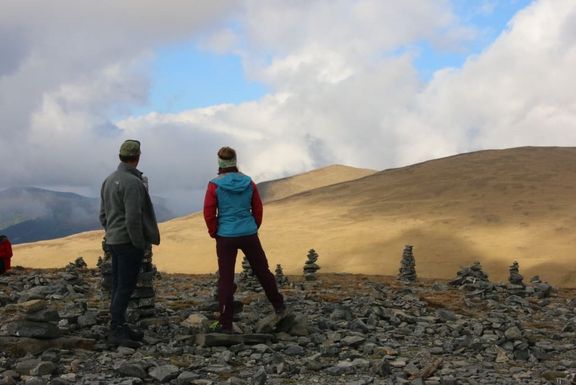
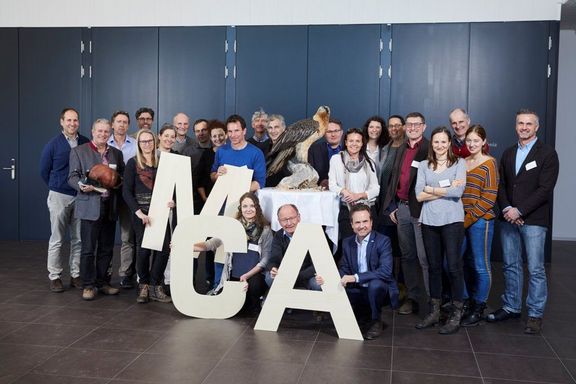
Nationalparke, Naturparke, Biosphärenparke, Welterbestätten oder Natura 2000 Gebiete erfolgreich planen und managen.
Hochrangige Ausbildung für ein interessantes Berufsfeld.
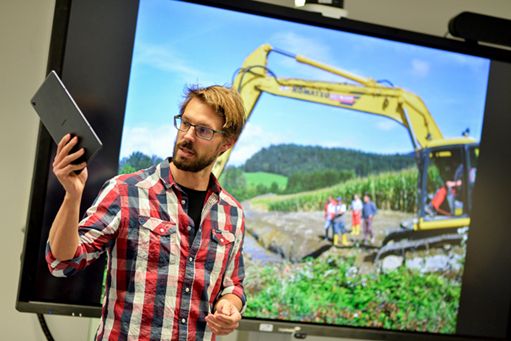
Maßnahmen für die Sicherung von Biodiversität auf Baustellen, an Infrastrukturen und auf Betriebsgeländen erfolgreich und effektiv umsetzen.
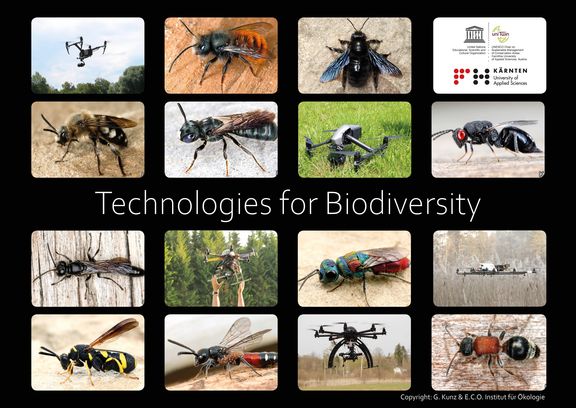
Mit Unterstützung von neuesten Technologien die Arten der heimischen Fauna und Flora bestimmen und kennen lernen.
Details
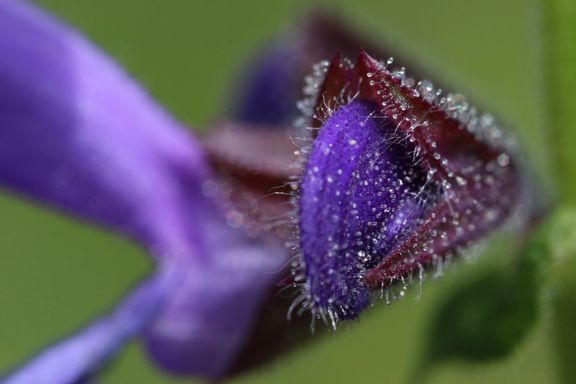
Aktuell entwickeln wir weitere Ausbildungsformate. Bleiben wir in Kontakt.
Are you ready to pave the way for a greener future? At Green Transition Engineering, we believe that achieving the goals of the green transformation requires efficient and well-informed decision-making. That‘s why we emphasize the power of data in our approach. Data holds the key to understanding the current state of affairs and identifying effective sustainability measures.
With expertise in data engineering and understanding of global connections across ecological, economic, and social realms, our graduates are uniquely positioned to shape the future of sustainable development.
The bachelor degree program "Green Transition Engineering" provides a broad and application-oriented basic education in the various transition disciplines (society, economy, ecology), the basic competences in the natural sciences and their technical possibilities, digitalisation and data engineering with relevant sensor, environmental and climate data, as well as fields of application. Accordingly, the curriculum is divided into nine focus areas in which specific competences are acquired and the Bachelor Thesis for completing the studies.

The future of mountaineering as a connecting element between the Hohe Tauern National Park, Carinthia University of Applied Sciences, and the Austrian…

The Carinthia University of Applied Sciences (FH Kärnten) is launching a public procurement process as part of the Interreg Central Europe HUMANITA…

The Carinthian Nature Conservation Award, the Golden Toad prize, invites biodiversity-promoting projects to apply!

From 28 to 29 April 2025, Austria's UNESCO Chairs gathered in Villach. A look back at two enriching days between university and nature park.
Dieser Inhalt ist nur in englischer Sprache verfügbar.


The BiodiverCITY Villach project has officially commenced in early March 2025.

The BioBox project aims to promote biodiversity in urban and rural areas by providing practical measures for both private and public green spaces.

The ICCC Project at CUAS focuses on the preparation of an Austrian contribution to the World Congress of UNECO Biosphere Reserves.

BiDiTEch Lab is a groundbreaking project funded by the Austrian Research Promotion Agency (FFG), which provides an opportunity to acquire research…
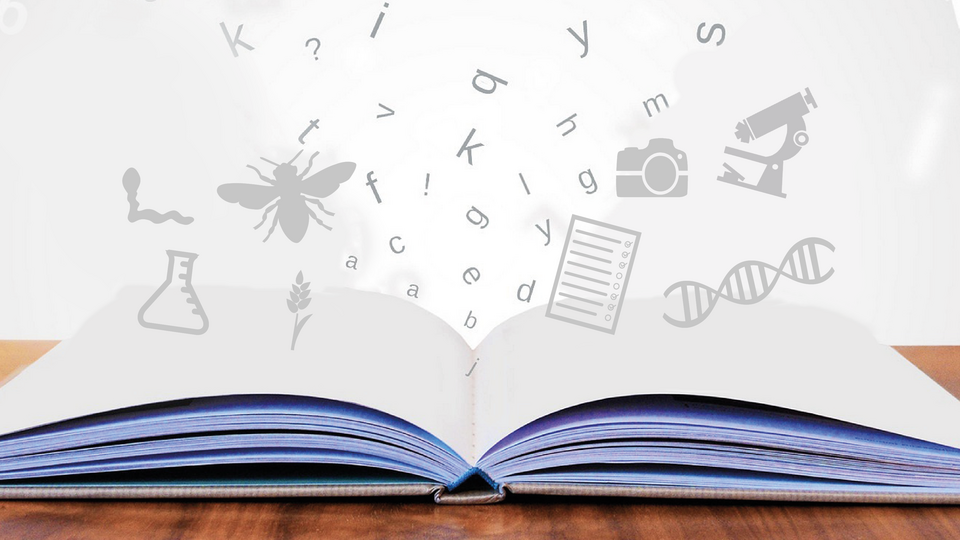
Cooperation with Natural Science Association for Carinthia
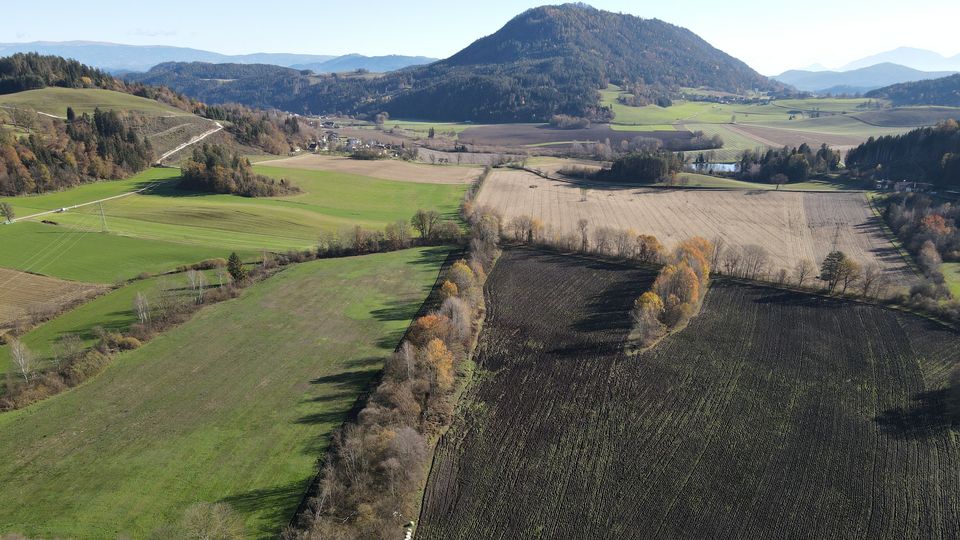
Cooperation with the "Stiftung der Kärntner Sparkasse" (Foundation of the Bank of Carinthia)
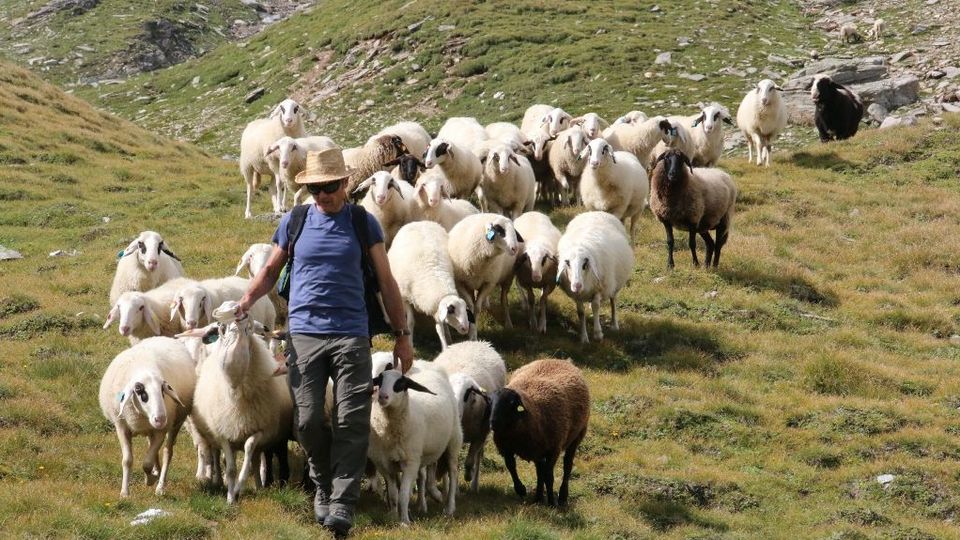
Cooperation with Hohe Tauern National Park Carinthia
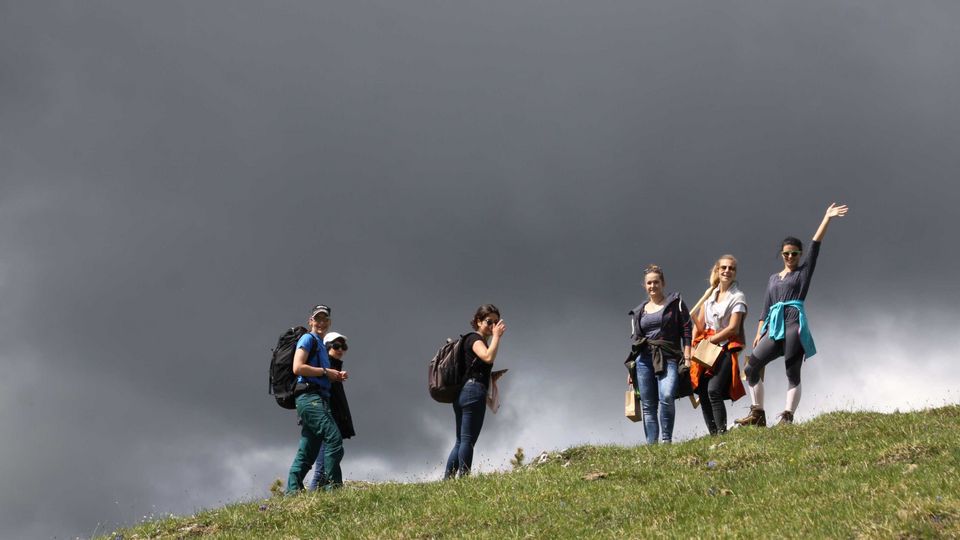
Cooperation with Biosphere reserve Nockberge (Salzburger Lungau & Kärntner Nockberge UNESCO Biosphere Reserve) and Klagenfurt University
Michael Jungmeier is chairholder. Throughout his career, the ecologist and human geographer has been focusing on biodiversity research, concepts and tools in nature conservation, on human-nature-relationship and environmental history. He worked extensively with inter- and transdisciplinary research designs and methods and has a long track of academic lectureships at different universities. Jungmeier has worked in planning and consulting of conservation areas, as well as in research and education, capacity building and training for more than 30 years.
FH-Prof. Mag. Dr. Michael Jungmeier
Professor for Nature Conservation and Sustainability
FH Kärnten – Campus Villach
Europastraße 4, 9524 Villach
Sofia Bergmann supports the team in the field of office organisation. She is responsible for administrative and organisational tasks of the UNESCO Chair team.
Sofia Bergmann
Office Support - UNESCO Chair on Sustainable Management of Conservation Areas
FH Kärnten – Campus Villach
Europastraße 4, 9524 Villach
Nina Nestler supports the UNESCO Chair team and office operations in terms of organization, coordination, and administration.
Nina Sophie Nestler
Team Assistenz
FH Kärnten – Campus Villach
Europastraße 4, 9524 Villach
Alexandra Liegl is the Head of the CUAS Academy. She is responsible for the overall coordination of all educational offers and the management of the CUAS Academy.
Mag.a Alexandra Liegl
Head of CUAS Academy
FH Kärnten – Campus Villach
Europastraße 4, 9524 Villach
+43 5 90500 4311
a.liegl[at]fh-kaernten[dot]at
Melina Hierländer works as course administrator at the CUAS Academy. She is responsible for the administration of the master programme “Management of Conservation Areas” that includes a range of tasks such as correspondence, lesson planning and giving support to applicants and students.
Melina Hierländer
Administration
+43 5 90500 4305
m.hierlaender[at]fh-kaernten[dot]at
FH Kärnten – Campus Villach
Europastraße 4, 9524 Villach
Christina Moser works as course administrator at the CUAS Academy. She is responsible for the administration of the certificate course “Nature Conservation Engineer” that includes a range of tasks such as correspondence, lesson planning and giving support to applicants and students.
Christina Moser
Administration
+43 5 90500 4303
c.moser[at]fh-kaernten[dot]at
FH Kärnten – Campus Villach
Europastraße 4, 9524 Villach
Vanessa Berger is a senior researcher and project manager at the UNESCO Chair. She is an ecologist specialized in spatial and temporal analysis, mobile data collection, and vegetation ecology. Her primary research interest lies in integrating new technologies into biodiversity monitoring workflows. Besides the work in other projects, her focus is mainly on the implementation and management of the FFG - Coin (capacity building) project 'BioMONITec - Biodiversity Monitoring Technologies - Test, Development and Transfer of disruptive engineering technologies into conservation practice'.
Vanessa Berger, MSc
Senior Researcher on Sustainable Management of Conservation Areas
FH Kärnten – Campus Villach
Europastraße 4, 9524 Villach
+43 5 90500 2139
v.berger[at]fh-kaernten[dot]at
Daniel Dalton is a Senior Researcher at the UNESCO Chair. He has a background as a specialist in integrated pest management of fruit and berry crops, focusing on insects. Daniel works on the implementation of the COIN project, ‘biodiversity monitoring technologies’ (BioMONITec).
Daniel Dalton, PhD
Senior Researcher on Sustainable Management of Conservation Areas
FH Kärnten – Campus Villach
Europastraße 4, 9524 Villach
+43 5 90500 2141
d.dalton[at]fh-kaernten[dot]at
Julian Greiler is a project assistant at the UNESCO Chair. He is currently a student in the Landscape planning and Landscape architecture study program at BOKU- University of Natural Resources and Life Sciences, Vienna. Julian supports projects with visitor monitoring within protected areas, for example the INTERREG IT-AT project INDIALPS.
Julian Greiler
Project assistant on Sustainable Management of Conservation Areas
FH Kärnten – Campus Villach
Europastraße 4, 9524 Villach
+43 5 90500 2166
j.greiler[at]fh-kaernten[dot]at
Gerfried Pirker is a Nature Conservation Engineer with further training in forestry and agriculture, along with expertise in equipment and technology. His work focuses on equipment and technology and he supports the research team in various projects such as Golden Toad Award, INDIALPS or MEMO.
Gerfried Pirker
Nature Conservation Engineer
FH Kärnten – Campus Villach
Europastraße 4, 9524 Villach
Marta Polizzi is a biologist and natural scientist with a focus on bat ecology. Her main interests regard spatial and temporal analysis, climate change, conservation ecology, animal behavior and bioacoustics. She has been involved in local bottom-up movements for the protection and re-appropriation of natural areas in urban contexts, and has experience with citizen science projects and environmental education.
Marta Polizzi, MSc
Junior Researcher on Sustainable Management of Conservation Areas
FH Kärnten – Campus Villach
Europastraße 4, 9524 Villach
+43 5 90500 2257
m.polizzi[at]fh-kaernten[dot]at
Lilia Schmalzl is Senior Researcher and Project Manager at the UNESCO Chair. She is a geographer with a focus on sustainability, social acceptance of renewable energies, water management and tourism in Conservation Areas. Lilia currently works on project management and implementation of the INTERREG Central Europe project HUMANITA and the INTERREG IT-AT project INDIALPS.
Lilia Schmalzl, MSc
Senior Researcher on Sustainable Management of Conservation Areas
FH Kärnten – Campus Villach
Europastraße 4, 9524 Villach
+43 5 90500 4315
l.schmalzl[at]fh-kaernten[dot]at
Johanna Schulz is a Junior Researcher at the UNESCO Chair. She is a biologist with a focus on genetics, in particular the sampling, processing and analysis of environmental DNA.
Johanna works on the implementation of the COIN project ‘biodiversity monitoring technologies’ (BioMONITec).
Johanna Marion Schulz, MSc.
Junior Researcher on Sustainable Management of Conservation Areas
FH Kärnten – Campus Villach
Europastraße 4, 9524 Villach
+43 5 90500 2181
j.schulz[at]fh-kaernten[dot]at

Selina Straßer is a Junior Researcher at the UNESCO Chair. She is a pedagogue with a focus on adult education and vocational training. Selina works on the implementation of the Horizon 2020 project SHARED GREEN DEAL and is responsible for the cooperation project Science_Linknockberge.
Selina Straßer, BA MA
Junior Researcher on Sustainable Management of Conservation Areas
FH Kärnten – Campus Villach
Europastraße 4, 9524 Villach
+43 5 90500 2142
s.strasser[at]fh-kaernten[dot]at
Klaus Steinbauer is a Senior Researcher at the UNESCO Chair. He is a biologist with a focus on biodiversity research, long-term monitoring and mountain ecology. Klaus works on the implementation of the COIN project, ‘biodiversity monitoring technologies’ (BioMONITec).
Mag. Dr. Klaus Steinbauer
Senior Researcher on Sustainable Management of Conservation Areas
FH Kärnten – Campus Villach
Europastraße 4, 9524 Villach
+43 5 90500 2138
k.steinbauer[at]fh-kaernten[dot]at
Vid Švara is a Senior Researcher at the UNESCO Chair. He is a biologist with an expertise in biodiversity research, genetic identification methods, and effects of environmental change on biota. Vid is coordinating and working on the implementation of genetic identification methods in diverse projects at the Chair including a Horizon Europe project HelEx, a Biodiversa+ project DNAquaIMG, an ÖAW and FWF Disruptive Innovation project ProTecteDNA, an Interreg Central Europe project Humanita, and a FFG COIN project BioMONITec.
Dr. rer. nat. Vid Švara
Senior Researcher on Sustainable Management of Conservation Areas
FH Kärnten – Campus Villach
Europastraße 4, 9524 Villach
Ilja Svetnik is a Junior Researcher at the UNESCO Chair. He is a biologist and ecologist with a focus on biodiversity management and science communications. Ilja works both on specific actions to establish, improve and monitor habitats, as well as on genetic and morphological anaylsis.
Ilja Svetnik, MSc
Junior Researcher on Sustainable Management of Conservation Areas
FH Kärnten – Campus Villach
Europastraße 4, 9524 Villach
+43 5 90500 2148
i.svetnik[at]fh-kaernten[dot]at
Elisabeth Wiegele is a Junior Researcher at the UNESCO Chair . She is a geographer and trained nature conservation engineer. Her research and work focuses on nature conservation in civil engineering, management of invasive species and management of protected areas. She is responsible for the coordination of the nature conservation engineer course.
Elisabeth Wiegele, MSc.
Junior Researcher on Sustainable Management of Conservation Areas
FH Kärnten – Campus Villach
Europastraße 4, 9524 Villach
+43 5 90500 5140
e.wiegele[at]fh-kaernten[dot]at
Polona Zakrajšek is a Junior Researcher at the UNESCO Chair. She has a bachelor’s degree in Geography and a master’s degree in Forestry, Water and Landscape Management, with a focus on mountain (primary) forests, forest ecology, biodiversity monitoring, and nature conservation.
Polona works for the Permanent Secretariat of the World Heritage “Ancient and Primeval Beech Forests of the Carpathians and Other Regions of Europe”. The Secretariat is hosted at the Carinthia University of Applied Sciences.
Polona Zakrajšek, MSc.
Junior Researcher on Sustainable Management of Conservation Areas
FH Kärnten – Campus Villach
Europastraße 4, 9524 Villach
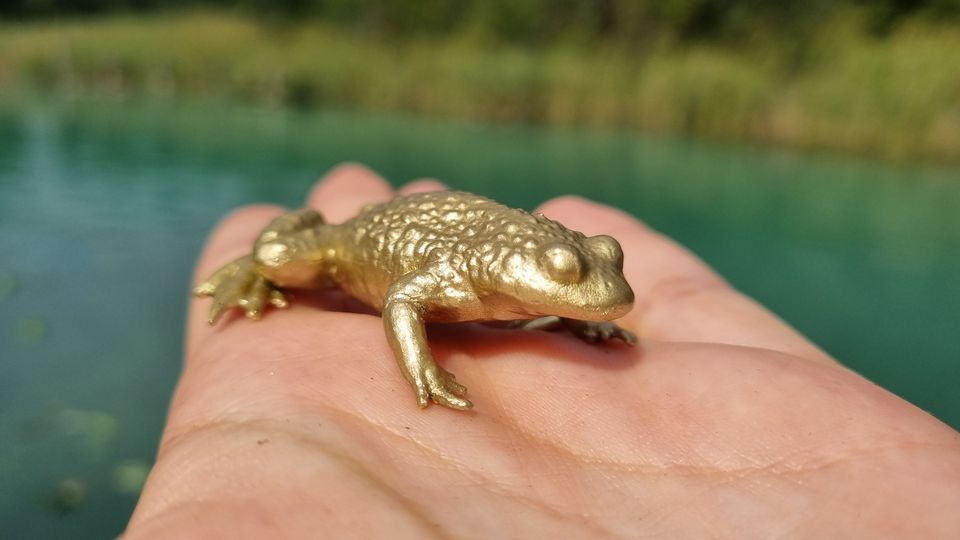
The Golden Toad Award is a prestigious competitive award that recognizes and promotes innovations in nature conservation in construction.
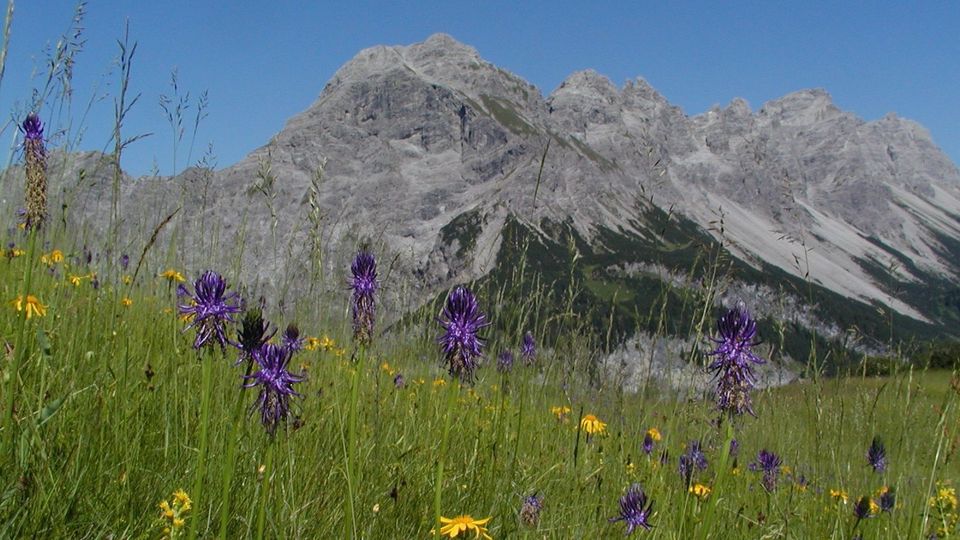
In Austria's federal system, the responsibility for nature conservation lies with the individual provinces (Bundesländer). It is essential to execute…
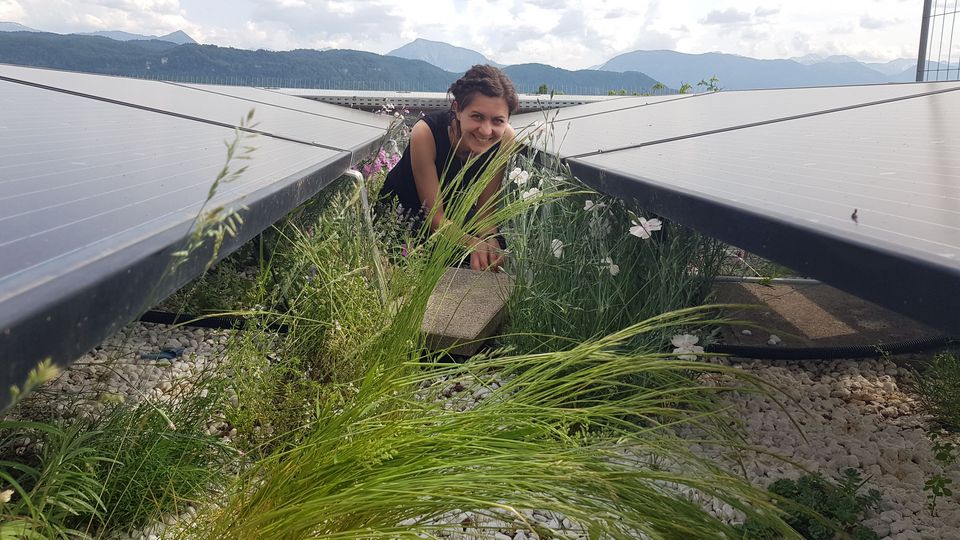
Together with partners HTL-Lastenstraße and GRÜNSTATTGRAU, the UNESCO CHAIR investigates the influence of vegetation on electricity production.
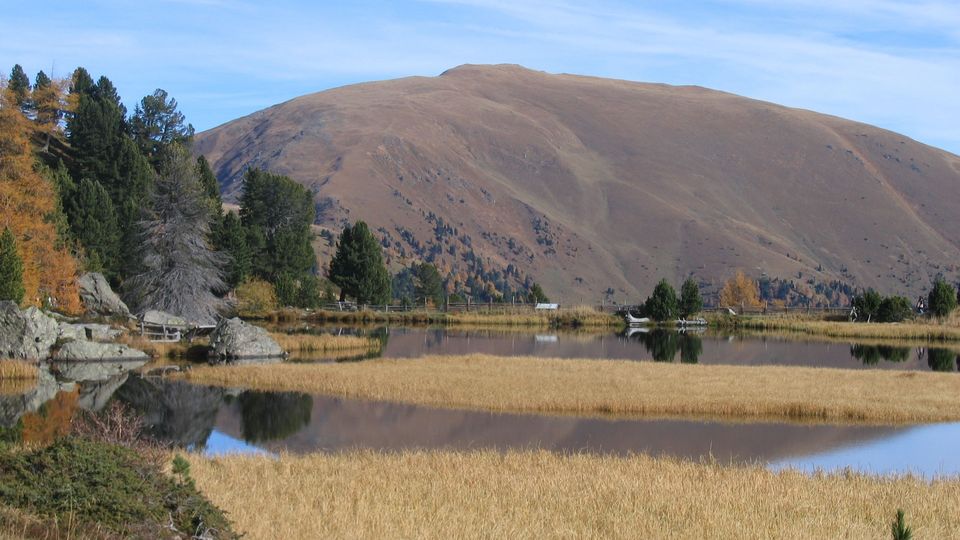
In this project, the Carinthia University of Applied Sciences is commissioned to produce a conference volume on the international EuroMAB conference…
2025
Wiegele E., Korchemlyuk M., Auinger M. 2025: Nature for Peace: Integrating Nature-Based Solutions in Post-Conflict Rehabilitation, Carpathian National Nature Park in Ukraine. In: Leal Filho, W., Nagy, G.J., Ayal, D.Y. (eds) Handbook of Nature-Based Solutions to Mitigation and Adaptation to Climate Change. Springer, Cham. https://doi.org/10.1007/978-3-030-98067-2_167-1
Auinger M., Jungmeier M., Hilgarter K., 2025: expedition.nationalpark.2024 – Mörtschach und Winklern: Bergsteigerische Perspektiven in der Schobergruppe. Villach. ISBN 978-3-99076-112-0. DOWNLOAD
Jungmeier M. 2025: Comprehensive overview of Germany’s biodiversity: Faktencheck Artenvielfalt. Carinthia Nature Tech, vol. 2, issue 1, p. 38–39, Klagenfurt. DOWNLOAD
Jungmeier M., Paulitsch-Fuchs A., Paulus G., Schneider M. 2025: BioDivTech Lab – conceptualizing a new research infrastructure for biodiversity monitoring. Carinthia Nature Tech, vol. 2, issue 1, p. 29–32, Klagenfurt. DOWNLOAD
Aigner S., Jungmeier M. 2025: How fast must one run to stay in the same place? On the second issue of Carinthia Nature Tech. Carinthia Nature Tech, vol. 2, issue 1, p. 4–6, Klagenfurt. DOWNLOAD
Insupp J., Jerabek M., Berger V., Dalton D. T. 2025: Comparative effectiveness of acoustic devices for monitoring bat species: a case study of Plecotus macrobullaris in Thomatal. Carinthia Nature Tech, vol. 2, issue 1, p. 16–27, Klagenfurt. doi: https://doi.org/10.71911/cii-p3-nt-2025212
Steinbauer K., Berger V., Scherling U., Jungmeier M. 2025: Deep-learning based population monitoring of the endangered plant species Gladiolus illyricus: lessons learned for implementation of a technology-based biodiversity monitoring approach. Carinthia Nature Tech, vol. 2, issue 1, p. 7–14, Klagenfurt. doi: https://doi.org/10.71911/cii-p3-nt-2025211
Jungmeier M. 2025: BiDiTechs - Wie disruptive Technologien die Biodiversitätsforschung prägen (werden). Tage der Biodiversität. February 25th - 28th 2025. University of Natural Resources and Life Sciences, Vienna. DOWNLOAD
Šmid Hribar M., Ribeiro D., Strasser S., Paliogiannis H. 2025: Exploring the Study Circle approach in
fostering change in biodiversity values among adults. In: Robison, R. and Royston, S. (eds.): Findings and Recommendations from the SHARED GREEN DEAL Social Experiments. Cambridge: SHARED GREEN DEAL. https://doi.org/10.5281/zenodo.15270156
Steinbauer K., Berger V., Jungmeier M. 2025: HabitAT - Rote Liste der Biotoptypen Österreichs: Datenaufbereitung und erste Erkenntnisse. Tage der Biodiversität. February 25th - 28th 2025. University of Natural Resources and Life Sciences, Vienna. DOWNLOAD
Švara V., Jungmeier M., Verissimo J. & Martins F.M.S. 2025: Disruptives Innovationsprojekt ProTecteDNA: Beispiel der Förderung der Karriereentwicklung. Tage der Biodiversität. February 25th - 28th 2025. University of Natural Resources and Life Sciences, Vienna. DOWNLOAD
Švara V. 2025: ZDrauA – Next-generation Biomonitoring der Drau für eine nachhaltige und gesunde Regionalentwicklung. Tage der Biodiversität. February 25th - 28th 2025. University of Natural Resources and Life Sciences, Vienna. DOWNLOAD
Taczanowska K., Stefan F., Schmalzl L., Ganhör D., Trap S. 2025: The role of digitalisation in outdoor recreation: monitoring and managing potential nature disturbances. Tage der Biodiversität. February 25th - 28th 2025. University of Natural Resources and Life Sciences, Vienna. DOWNLOAD
2024
Aigner S., Granig P., Jungmeier M., Zwander H., 2024: Carinthia Nature Tech: A new forum for integrating natural sciences and emerging technologies. In: Carinthia II, 214./134. Part 3 – Nature Tech, Klagenfurt, p. 4-6. Download
Ambrosi L., Berger V., Rainer G.,Obojes N., Tappeiner U., Tasser E., & Leitinger G., 2024. Spatiotemporal variability of evapotranspiration in Alpine grasslands and its biotic and abiotic drivers. Ecohydrology, e2633. doi: https://doi.org/10.1002/eco.2633
Auinger M., Jungmeier M., 2024: Schutzgebiete im Alpenbogen. In: Österreichischer Alpenverein (eds): Bergauf. 03/2024. 74-77. DOWNLOAD
Auinger M., Jungmeier M., Hilgarter K., 2024: expedition.nationalpark.2023 – Heiligenblut am Grossglockner: Rethinking tourism. The Future of Tourism in the Alpine-Adriatic Region. October 22nd - October 24 th 2024. Hermagor. DOWNLOAD
Auinger M., Jungmeier M., Hilgarter K., 2024: expedition.nationalpark.2023 – Heiligenblut am Großglockner: Tourismus neu denken. Villach. ISBN 978-3-99076-111-3. DOWNLOAD
Berger V., Dalton D. T., Steinbauer K., Insupp J. L., Schulz J. M., Švara V., Jungmeier M., 2024: Unlocking nature’s secrets – Digital Twins, eDNA and AI in nature conservation – a glimpse into the BioMONITec project. Forum Alpinum 2024, June 13th – 14th 2024, Kranjska Gora. ISBN 978-961-05-0899-1 (PDF), p. 53. DOWNLOAD
Dalton D., Berger V., Kirchmeir H., Adams V., Botha J., Halloy S., Švara V., Torres Ribeiro K., Chaudhary S., Jungmeier M., 2024: A framework for monitoring biodiversity in protected areas and other effective area-based conservation measures: Concepts, methods and technologies. IUCN WCPA Technical Report Series No. 7, Gland, Switzerland: IUCN. doi: https://doi.org/10.2305/HRAP7908. DOWNLOAD
Feldermann, K., Strasser, S., Salmhofer, M., 2024: Eco Social Work: Soziale Arbeit in Zeiten der Entfremdung. In: Sozialwirtschaft, 34, Heft 6. Nomos, p. 30-33. doi.org/10.5771/1613-0707-2024-6-30.
Gruber M., Fian L., Leuschner M., Nagele G., P. Anna, Pöcher J., Strasser S., 2024: Re(ad)dress – Einstieg in den Umstieg – Ein Programm zur Perspektivenbildung und Neuorientierung für ehemalige Sexarbeiter*innen in Kärnten. Kärntner Jahrbuch für Politik 2024, Hermagoras, 200-218. DOWNLOAD
Insupp J., Berger V., Greßmann G., 2024: Blending tradition with innovation: how acoustic sensors are revolutionizing rock ptarmigan monitoring. In: Carinthia II, 214./134. Part 3 – Nature Tech, Klagenfurt, 67-70. DOWNLOAD
Jungmeier M., 2024: Wellen und Muster der Europäischen Naturschutzpolitik in Kärnten – Das Beispiel Renaturierungsverordnung (RNV). Kärntner Jahrbuch für Politik 2024, Hermagoras, 231-241. DOWNLOAD
Jungmeier M., Berger V., Kirchmeir H., Strelnikova D., 2024: Conceptualizing the management of conservation areas: the launch of IPAM Toolbox 2.0. Forum Alpinum 2024, June 13th – 14th 2024, Kranjska Gora. ISBN 978-961-05-0899-1 (PDF), 55. DOWNLOAD
Jungmeier M., Berger V., Kirchmeir H., Strelnikova D., Wiegele E., 2024: Advancing technologies: IPAM Toolbox 2.0 for planning and management of Conservation Areas (MCA). In: Carinthia II, 214./134. Part 3 – Nature Tech, Klagenfurt, 49-61. DOWNLOAD
Komposch C., Glatz-Jorde S., Jungmeier M., Lamprecht J., 2024: Biodiversität im Biosphärenpark Kärntner Nockberge. Ergebnisse des 8. GEO-Tages der Natur 2023 – Auf der Suche nach zoologischen & botanischen Bären in der Bärengrube. Carinthia II, 214./134. Jahrgang, 61-132. DOWNLOAD
Sadoun M., Dalton D., Berger V., Paulus G., Anders K.-H., Svetnik I., Schultz J., and Unglaub P., 2024: High resolution environmental monitoring of pollinator insects through macro camera trapping and AI. Extended abstract, 4th International Workshop on Camera Traps, AI, and Ecology. September 5th 2024. Hagenberg / online. DOWNLOAD
Schmalzl L., De Bortoli I., Taczanowska K., 2024: Digital trails: harnessing outdoor and fitness app data for sustainable tourism management in sensitive ecosystems. Forum Alpinum 2024, June 13th – 14th 2024, Kranjska Gora. ISBN 978-961-05-0899-1 (PDF), 56.DOWNLOAD
Schmalzl L., Kieliszek Z., 2024: Improvement of accuracy of different automatic visitor counting devices to monitor cyclists in conservation areas. In: Carinthia II, 214./134. Part 3 – Nature Tech, Klagenfurt, 71-76. DOWNLOAD
Wiegele E, Korchemlyuk M., Chrystie E., 2024: Implementing Nature for Peace: Multilateral Collaborations and Project-Based Initiatives in the Carpathian National Nature Park – A Case Study. 17. Forschungsforum der österreichischen Fachhochschulen. April 17th - 18th 2024. Krems. DOWNLOAD
2023
Auinger M., Jungmeier M., Mayer H., 2023: EuroMAB conference proceedings 2022. Kärntner Biosphärenparkfonds (eds.). Ebene Reichenau. DOWNLOAD
Auinger M., Jungmeier M., Mayer H., 2023: EuroMAB Konferenzbericht 2022. Kärntner Biosphärenparkfonds (Hrsg.). Ebene Reichenau. DOWNLOAD
Auinger M., Jungmeier M., 2023: Parks 4.0 – Schutzgebiete als Chance für Berggebiete. In: Oedl-Wieser, T., Machold, I. (Hrg.) 2023: Zur Zukunft der Berggebiete. Reflexionen zu Regional- und Berggebietsentwicklung. Bundesanstalt für Agrarwirtschaft und Bergbauernfragen. Wien (BAB Report, 006), 33–40. DOWNLOAD
Auinger M., Jungmeier M., Hilgarter K., 2023: expedition.nationalpark.2022 – Mallnitz: Landwirtschaft im Wandel. Verlag Heyn, Klagenfurt. ISBN 978-3-7084-0683-1. DOWNLOAD
Auinger M., Jungmeier M., Hilgarter K., 2023: expedition.nationalpark.2022. 8. Österreichische Citizen Science Konferenz. April 18th - April 21st 2023. Linz. DOWNLOAD
Auinger M., Jungmeier M., Hilgarter K., 2023: expedition.nationalpark.2022 – Dialogue as a method for a transdisciplinary format. Proceedings of Science, 442:17. doi: 10.22323/1.442.0017. DOWNLOAD
Auinger M., 2023: SCiENCE_LINKnockberge research cooperation. Connecting a Biosphere Region and the scholarly world. Science and Research in, for and with UNESCO Biosphere Reserves conference 2022. May 16th - 20th 2022. Chorin-Schorfheide. DOWNLOAD
Berger V., Švara V., Svetnik I., Wohlfahrt S., Jungmeier M., 2023: Neue Technologien im Einsatz. In: Glatz-Jorde S., Lamprecht J., Schäfer I., Jungmeier M. (eds.): Biodiversität im Biosphärenpark Kärntner Nockberge. Ergebnisse des 7. GEO-Tages der Natur 2022, Carinthia II, 213./133 Jahrgang, 17-88. DOWNLOAD
Chrystie E., Korchemlyuk M., Wiegele E., 2023: Implementation of the Nature for Peace Concept to Support Protected Areas Through Multilateral Thematic Based Partnerships and Project Based Cooperation. In: Book of Abstracts of the International Scientific Conference protected areas and local communities: Exploring the challenges of nature conservation and human well-being. Sofia, Bulgaria.
Dalton D.T., Berger V., Adams V., Botha J., Halloy S., Kirchmeir H., Sovinc A., Steinbauer K., Švara V., Jungmeier M., 2023: A conceptual framework for biodiversity monitoring programs in conservation areas. Sustainability. 15(8):6779. doi:10.3390/su15086779. DOWNLOAD
Dalton D. T., Berger V., Steinbauer K., Švara V., Jungmeier M., 2023: The monitoring global guideline framework for biodiversity monitoring. In: Wrbka T. & Übl C., 2023 (eds.): Conference Volume to the 7th International Symposium for Research in Protected Areas 2022, Vienna, 33-37. DOWNLOAD
Erlacher M., Jungmeier M., 2023: Landschaftswandel in Kärnten. Gründe und Hintergründe des Biodiversitätsverlustes. In: Komposch C. (Hrg.), 2023: Rote Liste gefährdeter Tiere Kärntens. Naturwissenschaftlicher Verein Kärnten, Klagenfurt, 63-73.
Erlacher M., Gela A.G., Derseh A.A., Mengistu D.A., Ebistu T.A., Jungmeier M., Car A., 2023: Collaborative Monitoring for Sustainable Development of Lake Tana UNESCO Biosphere Reserve. 16. Forschungsforum der österreichischen Fachhochschulen. April 19th-20th 2023. St. Pölten. DOWNLOAD
Glatz-Jorde S., Lamprecht J., Schäfer I., Jungmeier M., Komposch C., 2023: Biodiversität im Biosphärenpark Kärntner Nockberge. Ergebnisse des 7. GEO-Tages der Natur 2022. Carinthia II, 213./133. Jahrgang, 17-88. DOWNLOAD
Hirschmugl M., Sobe C., Di Filippo A., Berger V., Kirchmeir H., Vandekerkhove, K. 2023: Review on the Possibilities of Mapping Old-Growth Temperate Forests by Remote Sensing in Europe. Environmental Modeling & Assessment. doi: https://doi.org/10.1007/s10666-023-09897-yDOWNLOAD
Jungmeier M. et al., 2023: Mitarbeit an: Komposch C. & Egger E., 2023: Eine zoologisch orientierte Definition von Biotoptypen. In: Komposch C. (Hrg.), 2023: Rote Liste gefährdeter Tiere Kärntens. Naturwissenschaftlicher Verein Kärnten, Klagenfurt, 135-146. DOWNLOAD
Köstl T., Berger V., Kirchmeir H., Hecke C., Jungmeier M., 2023: Documentation of natural processes in the Gesäuse National Park. In: Wrbka T. & Übl C., 2023 (eds.): Conference Volume to the 7th International Symposium for Research in Protected Areas 2022, Vienna, 147-147. DOWNLOAD
Mermer S., Maslen E.A., Dalton D.T., Nielsen A.L., Rucker A., Lowenstein D., Wiman N., Bhattarai M., Soohoo-Hui A., Harris E.T., Pfab F., and Walton V.M. 2023: Temperature-Dependent Life Table Parameters of Brown Marmorated Stink Bug, Halyomorpha halys (Stål) (Hemiptera: Pentatomidae) in the United States. Insects 14(3): 248. DOI: 10.3390/insects14030248. DOWNLOAD
Raths J., Švara V., Lauer B., Fu Q., Hollender J., 2023: Speed it up: How temperature drives toxicokinetics of organic contaminants in freshwater amphipods. Global Change Biology, 29, 1390–1406. doi: https://doi.org/10.1111/gcb.16542 DOWNLOAD
Schmalzl L., Hartmann G., Berger V., Jungmeier M. (2023). Towards a transnational strategy to monitor visitor flows in the Karawanken/Karavanke UNESCO Global Geopark. 10th International Conference on UNESCO Global Geoparks. September 07th - 11th 2023, Marrakech. DOWNLOAD
Schmalzl L., Kieliszek Z., 2023: Report on good-practice examples to monitor environmental impacts of tourism inside protected areas. Carinthia University of Applied Sciences, Villach. DOWNLOAD
Straßer S., 2023: Informal learning through nature experience – the educational practice of rangers in a biosphere reserve. In: Lopez, J.B/Rauch, F.: Research and Practices in Science, Mathematics and Technology Education. APEduC Journal, Vol.4 (1): 78-86. DOWNLOAD
Švara V., Berger V., Dalton D. T., Steinbauer K., Jungmeier M., 2023: Applicability of eDNA metabarcoding for biodiversity assessment in the sensitive ecosystems of nature protection areas. In: Wrbka T. & Übl C., 2023 (eds.): Conference Volume to the 7th International Symposium for Research in Protected Areas 2022, Vienna, 290-290. DOWNLOAD
Švara V., Berger V., Dalton D. T., Steinbauer K., Jungmeier M., 2023: eDNA metabarcoding applicability for biodiversity assessment in a nature protection area. In: Deutsche Gesellschaft für Limnologie e.V.: Ergebnisse der Jahrestagung 2022, Essen, 211-213. DOWNLOAD
Walton V.M., Dalton D.T., Miller B., Harris E.T., Mirandola E., Tait G., Krawczyk G., Mermer S., 2023: Economic impact and management of brown marmorated stink bug, Halyomorpha halys (Stål) (Hemiptera: Pentatomidae), in Oregon hazelnut orchards. Acta Hortic. 1379, 425-432. doi: https://doi.org/10.17660/ActaHortic.2023.1379.61
Wiegele E., Jungmeier M., 2023: Naturschutz für Baustellen, Betriebsgelände und Infrastrukturen – Beispiele aus der Praxis. Umwelt – Schriftenreihe für Ökologie und Ethologie 48, 101-118.
Wiegele E. 2023: Protected Areas in War Zones – Global Analysis Towards the Nature for Peace Concept. In: Györkös, J. et al. (ed.). (2023). ATHENA Research Book, Volume 2, University of Maribor, University Press. doi: 10.18690/um.4.2023
Wiegele E. & Jungmeier M. 2023: Nature for Peace - Protected areas in war zones for healing and peace-building. In: Protected Areas In-Sight. The Journal of the EUROPARC Federation (Page 30-31)
Wiegele E, Korchemlyuk M., Chrystie E., Jungmeier M., 2023: Nature for Peace. Poster presentation at EUROPARC Conference. October 3rd - 6th 2023. Leeuwarden, Netherlands.
Wiegele E., Korchemlyuk M., Chrystie E., Auinger M., Jungmeier M., 2023: Nature for Peace as a concept to protect nature and people in conflict zones. Poster presentation at Fachsymposium „Klimawandel, Gesundheit und Resilienz: aktuelle Trends und künftige Entwicklungen in Lehre, Forschung und Praxis in der DACH (Deutschland, Österreich, Schweiz sowie Tirol) Region“. September 21st - 22nd 2023. Villach.
2022
Berger V., Strelnikova D., Steinbauer K., Anders K., Dalton D., Paulus G., Jungmeier M., 2022: Biodiversity Monitoring Configurator. World Biodiversity Forum 2022. June 26th - July 1st 2022. Davos. DOWNLOAD
Braun V., Aichholzer G., Auinger M., Arnberger A., Eder R., Jungmeier M., Klenovec C., Pichler-Koban C., Rauch, F., Rossmann D., Schaflechner M., Weiss A. & Wolf L. 2022: Transdisciplinary research on virtual participation processes in Austrian mountain UNESCO Biosphere Reserves – Digitalisation for sustainable development as a relevant research field. Der öffentliche Sektor – The Public Sector, Vol. 48 (1) 2022: 9-15. DOWNLOAD
Engels B., Jungmeier M., 2022: Fractals of Sustainable Development - Results of a session on “Cooperation between biosphere reserves across national and regional borders". EUROMAB Conference 2022. September 14th 2022. Bad Kleinkirchheim. DOWNLOAD
Hilgarter K., Granig P., Jungmeier M., Kloss-Brandstätter A., 2022: Nachhaltige Mobilität: Geschlechts- und altersbezogene Unterschiede von Vertrauen respektive Misstrauen gegenüber automatisierter Mobilität. FFH Conference 2022. April 21st-22nd 2022. Villach. DOWNLOAD
Jungmeier M., Merkac Š., Unglaub R., 2022: Untersuchungen zum Ebriacher Säuerling im UNESCO Global Geopark Karawanken. Carinthia II, 212./132. Jhg., 99-112. Klagenfurt. DOWNLOAD
Jungmeier M., Rist S., Tribaldos T., et. al. 2022: Governing mountain commons between tradition and innovation. WHEC 2022. May 18th - 20th 2022. Barcelona. DOWNLOAD
Jungmeier M., Wiegele E., 2022: Designing educational offers for nature conservation in the 21st century – Concepts and examples. 7th Nationalparks Austria Symposium for Research in Protected Areas. September 7th-9th 2022, Vienna. DOWNLOAD
Jungmeier M., Auinger M., Pulvermacher R., Straßer S., 2022: Transdisziplinäre Bildung als FH-Auftrag: Das Beispiel Science_Link Nockberge. FFH Conference 2022. April 21st - 22nd 2022. Villach. DOWNLOAD
Jungmeier M., Schneide M.; Wiegele E., 2022: Ausbildung zur Naturschutzfachkraft – Abschlussarbeiten 2022. DOWNLOAD
Komposch C., Glatz-Jorde S., Jungmeier M., Wagner H., 2022: Biodiversität im Biosphärenpark Kärntner Nockberge. Ergebnisse des 6. GEO-Tages der Natur 2021 - Am Fuß der Zunderwand. Carinthia II, 212./132. Jahrgang, 53-132. DOWNLOAD
Pascher K., Švara V., Jungmeier M., 2022: Environmental DNA-Based Methods in Biodiversity Monitoring of Protected Areas: Application Range, Limitations, and Needs. Diversity 2022, 14, 463. doi: https://doi.org/10.3390/d14060463DOWNLOAD
Pichler-Koban C., Jungmeier M., 2022: Von der Verlegenheitslösung zur internationalen Modellregion. Die Nutzungs- und Konfliktgeschichte der Nockberge zwischen Hoteldorf und Biosphärenpark (1970-2020). In: Aschwanden R., Buck M, Kupper P., Schmidt K.J., 2022 (eds.): Conflits d´usage depuis 1950. Conflitti d´uso dal 1950. Nutzungskonflikte seit 1950. Histoire des Alpes. Storia delle Alpi. Geschichte der Alpen. Vol. 2022/27, Chronos Zürich, 113-132.
Schmalzl L., Hartmann G., Jungmeier M., Komar D., Schomaker R.M., 2022: Transnational water resource management in the Karawanken/Karavanke UNESCO Global Geopark. In: Journal of Entrepreneurship, Management and Innovation. Volume 18, Issue 3, 2022: 7-36. doi: https://doi.org/10.7341/20221831DOWNLOAD
Schmalzl L., Hartmann G., Rman N., Zierler J., Jungmeier M., 2022: KaraWAT - Strategy for the sustainable management of water resources in the Karawanken UNESCO Global Geopark. FFH Conference 2022. April 21st - 22nd 2022. Villach. DOWNLOAD
Schwarzl E., Terk E., Car A., Paulus G., Erlacher M., 2022: CoMon - Collaborative Monitoring for Sustainable Development of Lake Tana UNESCO Biosphere Reserve (Ethiopia). GI_Salzburg. July 5th-7th 2022. Salzburg. https://arcg.is/1biKmb0
Švara V., Michalski S. G., Krauss M., Schulze T., Geuchen S., Brack W., & Luckenbach T., 2022: Reduced genetic diversity of freshwater amphipods in rivers with increased levels of anthropogenic organic micropollutants. Evolutionary Applications, 00, 1– 16. doi: https://doi.org/10.1111/eva.13387 DOWNLOAD
Steinbauer K., Lamprecht A., Winkler M., Di Cecco V., Fasching V., Ghosn D., Maringer A., Remoundou I., Suen M., Stanisci A., Venn S., Pauli H., 2022: Recent changes in high-mountain plant community functional composition in contrasting climate regimes. In “The Science of the total environment”, 829p. DOI: 10.1016/j.scitotenv.2022.154541 DOWNLOAD
Wiegele E., Schneider M., Jungmeier M., 2022: Conservation Engineering: Innovations for biodiversity-friendly construction. FFH Conference 2022. April 21st-22nd 2022. Villach. DOWNLOAD
Wiegele E., Jungmeier M., Schneider M. (Hrg.), 2022: Handbuch Naturschutzfachkraft. Praktischer Naturschutz für Baustellen, Betriebsgelände und Infrastrukturen. Fraunhofer Verlag., 662 S., Stuttgart, ISBN 978-3-7388-0598-7.
Auinger M., 2022: Windparks. In: Wiegele E., Jungmeier M., Schneider M. (Hrg.), 2022: Handbuch Naturschutzfachkraft. Praktischer Naturschutz für Baustellen, Betriebsgelände und Infrastrukturen. Fraunhofer Verlag., Stuttgart, 627-631.
Auinger M., 2022: Orientierung und Verortung im Gelände – Geräte. In: Wiegele E., Jungmeier M., Schneider M. (Hrg.), 2022: Handbuch Naturschutzfachkraft. Praktischer Naturschutz für Baustellen, Betriebsgelände und Infrastrukturen. Fraunhofer Verlag., Stuttgart, 225-228.
Erlacher C., Erlacher M., Car A., 2022: GIS und RS – Angewandte Geoinformatik , Vermessungstechnik und Fernerkundung. In: Wiegele E., Jungmeier M., Schneider M. (Hrg.), 2022: Handbuch Naturschutzfachkraft. Praktischer Naturschutz für Baustellen, Betriebsgelände und Infrastrukturen. Fraunhofer Verlag., Stuttgart, 240-270.
Jungmeier M., Schneider M., 2022: Naturschutzfachkraft – Funktion im professionellen Naturschutz. In: Wiegele E., Jungmeier M., Schneider M. (Hrg.), 2022: Handbuch Naturschutzfachkraft. Praktischer Naturschutz für Baustellen, Betriebsgelände und Infrastrukturen. Fraunhofer Verlag., Stuttgart, 18-22.
Jungmeier M., 2022: Handbuch Naturschutzfachkraft – Vademecum für die Praxis. In: Wiegele E., Jungmeier M., Schneider M. (Hrg.), 2022: Handbuch Naturschutzfachkraft. Praktischer Naturschutz für Baustellen, Betriebsgelände und Infrastrukturen. Fraunhofer Verlag., Stuttgart, 23-30.
Jungmeier M., 2022: Sicherheit und Gesundheit im Gelände und auf Baustellen - Checkliste. In: Wiegele E., Jungmeier M., Schneider M. (Hrg.), 2022: Handbuch Naturschutzfachkraft. Praktischer Naturschutz für Baustellen, Betriebsgelände und Infrastrukturen. Fraunhofer Verlag., Stuttgart, 32-35.
Jungmeier M., 2022: Naturschutzbiologie – Zentrale Begriffe und Konzepte. In: Wiegele E., Jungmeier M., Schneider M. (Hrg.), 2022: Handbuch Naturschutzfachkraft. Praktischer Naturschutz für Baustellen, Betriebsgelände und Infrastrukturen. Fraunhofer Verlag., Stuttgart, 59-71.
Jungmeier M., 2022: Naturschutztechnologien und Gerätekunde – Überblick. In: Wiegele E., Jungmeier M., Schneider M. (Hrg.), 2022: Handbuch Naturschutzfachkraft. Praktischer Naturschutz für Baustellen, Betriebsgelände und Infrastrukturen. Fraunhofer Verlag., Stuttgart, 222-224.
Schmalzl L., 2022: Landschaftsbild – Erfassung und Bewertung. In: Wiegele E., Jungmeier M., Schneider M. (Hrg.), 2022: Handbuch Naturschutzfachkraft. Praktischer Naturschutz für Baustellen, Betriebsgelände und Infrastrukturen. Fraunhofer Verlag., Stuttgart, 556-564.
Wiegele E., 2022: Neobiota – Umgang mit invasiven Arten. In: Wiegele E., Jungmeier M., Schneider M. (Hrg.), 2022: Handbuch Naturschutzfachkraft. Praktischer Naturschutz für Baustellen, Betriebsgelände und Infrastrukturen. Fraunhofer Verlag., Stuttgart, 195-209.
Wiegele E., Schneider M., Jungmeier M., 2022: Die Naturschutzfachkraft – Spezialisierte Ausbildung für ›hands-on‹- Naturschutz. In: Wiegele E., Jungmeier M., Schneider M. (Hrg.), 2022: Handbuch Naturschutzfachkraft. Praktischer Naturschutz für Baustellen, Betriebsgelände und Infrastrukturen. Fraunhofer Verlag., Stuttgart, 635-646.
Wieser C., Jungmeier M., 2022: Lichtverschmutzung. In: Wiegele E., Jungmeier M., Schneider M. (Hrg.) 2022: Handbuch Naturschutzfachkraft. Praktischer Naturschutz für Baustellen, Betriebsgelände und Infrastrukturen. Fraunhofer Verlag., Stuttgart, 612-615.
2021
Dalton D.T., Pascher K., Berger V., Steinbauer K., Jungmeier M., 2021: Novel technologies and their application for protected area management: a supporting approach in biodiversity monitoring. In: Suratman MN, editor. Pr2021otected area management – recent advances. ISBN 978-1-83969-813-2. IntechOpen Publishing, London, UK. doi: 10.5772/intechopen.99889 https://cdn.intechopen.com/pdfs/78656.pdf
Fuchs A., Jungmeier M., Mayer R., Pichler-Koban C., 2021: Der Fallopia-Komplex (Fallopia japonica, F. sachalinensis, F. x bohemica): Ergebnisse ausgewählter Feldversuche eines Sparkling-Science-Projekts zu Taxonomie, Wachstum und Management. In: Carinthia II. Klagenfurt, 49-60 S. DOWNLOAD
Fuchs A., Berger V., Steinbauer K., Köstl T., Wuttej D., Jungmeier M., 2021: The long-term effects of monoculture maize cultivation on plant diversity. Phytocoenologia Vol. 50 (2021), Issue 4, 397-408. DOWNLOAD
Fuchs A., Pichler-Koban C., Pitman A., Elmenreich W., Jungmeier M., 2021: Games and Gamification - New Instruments for Communicating Sustainability. In: Weder F., Krainer L., Karmasin M., 2021: The Sustainability Communication Reader - A Reflective Compendium; Springer; doi: 10.1007/978-3-658-31883-3_13
Glatz-Jorde S., Jungmeier M., Aurenhammer S., Komposch C., 2021: Biodiversität im UNESCO Biosphärenpark Salzburger Lungau & Kärntner Nockberge. Ergebnisse des 5. GEO-Tages der Natur 2020 - Rund um die Grundalm. Carinthia II, 211./131. Jahrgang, 19-54. DOWNLOAD
Jungmeier M., Borsdorf A., Braun V., Häring V., Hammer T., Pichler-Koban C., 2021: Pärke, Parks and Reservate – biosphere reserves in Austria, Germany and Switzerland on their way towards Biosphere 4.0?. eco.mont. Volume 13; special issue 2021, 15-26. DOWNLOAD
Jungmeier M., Schneider M., Wiegele, E., 2021: Ausbildung zur Naturschutzfachkraft – Abschlussarbeiten 2021. DOWNLOAD
Jungmeier M., Huber M., 2021: A low-cost BRIM (Biosphere reserve integrated monitoring)? The example of the Salzburger Lungau & Kärntner Nockberge BR (Austria). EGU General Assembly 2021, online, 19–30 Apr 2021, EGU21-4730, DOWNLOAD
Jungmeier M., Kovarovics A., Leitner H., Rossmann D., 2021: Managing emerging patterns of outdoor recreation - The example of Nockberge Biosphere Reserve, Austria. In: Aas O., Breiby M., Selvaag S.K., Eriksson P.-A., Boerrestad B. (eds.), 2021: The 10th MMV Conference: Managing outdoor recreation experiences in the Anthropocene - Resources, markets, innovations. MINA fagrapports 73, 198-199. DOWNLOAD
Köstl T., Fuchs A., Jungmeier M., 2021: Almwirtschaftliche Maßnahmen im Unteren Gailtal Ausgewählte Ergebnisse aus zwei Dekaden Vegetationsmonitoring. Alm- und Bergbauer. 3/2012, 16-19. DOWNLOAD
Pascher K., Steinbauer K., Berger V., Dalton D.T., Jungmeier M., 2021: Ökologische Statusüberprüfung von Schutzgebieten mit Hilfe klassischer und hochtechnologischer Monitoringkonzepte und Tools. 19. Österreichische Botanikertagung. September 23rd-25th 2021. Tagungsband, S.52., Krems / Donau. DOWNLOAD
Pichler-Koban C., Jungmeier M., 2021: Reger Verkehr auf der "Bärenbrücke". DIE BRÜCKE 22, 10-11.
Rauch F., Elmenreich W., Hübner R., Jungmeier M., Gracner E., Sposato R.G., 2021: Designing and Implementing an Interfaculty Elective "Sustainable Development" Course at a University: Concepts, Developments and Lessons Learned. Action Research and Innovation in Science Education, 2021, 4(1), 33-36. doi: https://doi.org/10.12973/arise/506882
Steinbauer K., Berger V., Köstl T., Wuttej D., Kirchmeir H., Jungmeier M., 2021: Abgrenzung von Vegetationseinheiten anhand multitemporaler Luftbilder am Beispiel von Feuchtbrachen. 19. Österreichische Botanikertagung. September 23rd-25th 2021. Tagungsband, S.22., Krems / Donau. DOWNLOAD
Tait G., Mermer S., Stockton D., Lee J., Avosani S., Abrieux A., Anfora G., Beers E., Biondi A., Burrack H., Cha D., Chiu J.C., Choi M.-Y., Cloonan K., Crava C.M., Daane K.M., Dalton D.T., Diepenbrock L., Fanning P., Ganjisaffar F., Gómez M.I., Gut L., Grassi A., Hamby K., Hoelmer K.A., Ioriatti C., Isaacs R., Klick J., Kraft L., Loeb G., Rossi-Stacconi M.V., Nieri R., Pfab F., Puppato S., Rendon D., Renkema J., Rodriguez-Saona C., Rogers M., Sassù F., Schöneberg T., Scott M.J., Seagraves M., Sial A., Van Timmeren S., Wallingford A., Wang X., Yeh D.A., Zalom F.G, Walton, V.M., 2021: Drosophila suzukii (Diptera: Drosophilidae): A Decade of Research Towards a Sustainable Integrated Pest Management Program. In: Journal of Economic Entomology 114 (5):1950–1974. doi: 10.1093/jee/toab158.
Zollner D., Mayrhofer W., Ellemunter L., Fuchs A., Jungmeier M., 2021: Losing the Ground? Assessing Spatial Planning and Quantitative Soil Protection in the Alpine Region. Der öffentliche Sektor – The Public Sector, 2021, Vol. 47(1), 27-34. DOWNLOAD
2020
Aurenhammer S., Komposch C., Glatz-Jorde S., Jungmeier M., 2020: Biodiversität im UNESCO Biosphärenpark Salzburger Lungau & Kärntner Nockberge. Ergebnisse des 4. GEO-Tages der Natur 2019 - Vielfalt an den Ufern und Berghängen des Millstätter Sees. In: Carinthia II. Klagenfurt, 7-44 S. DOWNLOAD
Borsdorf A., Jungmeier M., 2020: Das Weltnetz der Biosphere Reserves (UNESCO WNBR) im Spiegel des Nachhaltigkeitskonzeptes: Stand und Perspektiven. In: Borsdorf A., Jungmeier M., Braun V., Heinrich K. (Hrg.), 2020: Biosphäre 4.0. – UNESCO Biosphere Reserves als Modellregionen einer nachhaltigen Entwicklung. Springer Spektrum, 3-33. DOWNLOAD
Borsdorf A., Jungmeier M., Braun V., Heinrich K. (Hrg.), 2020: Biosphäre 4.0. – UNESCO Biosphere Reserves als Modellregionen einer nachhaltigen Entwicklung. Springer Spektrum, 334 S. ISBN 978-3-662-60707-7.
Fuchs A., Pichler-Koban C. & Jungmeier M., 2020: Der Staudenknöterich - Praxisleitfaden zum Management von Fallopia japonica. Sparkling Science, Klagenfurt, 21 S. DOWNLOAD
Glatz-Jorde S., Jungmeier M., Hradetzky R. & Berger D., 2020: The IUCN Green List as a tool for protected area management - the example of City meets Nature. eco.mont; Volume 12; Number 1, 50-54. DOWNLOAD
Jungmeier M. & Fuchs A., 2020: Engaging heritage communities by citizen science - Considerations, experiences and lessons learnt. Proceedings IE, Forstering Heritage Communities, 2020/41-51. DOWNLOAD
Jungmeier M., Schneider M., Wiegele E., 2020: Ausbildung zur Naturschutzfachkraft – Abschlussarbeiten 2020. DOWNLOAD
Jungmeier M., Arpa N.Y. & Pechacek P., 2020: The Guidelines for Establishing Protected Areas. Conservation and Sustainable Management of Turkey’s Steppe Ecosystems Project. FAO and MAF, Ankara, 96 p. DOWNLOAD
Jungmeier M., Arpa N.Y. & Pechacek P., 2020: The Guidelines for Protected Areas Management Planning. Conservation and Sustainable Management of Turkey’s Steppe Ecosystems Project. FAO and MAF, Ankara, 92 p. DOWNLOAD
Jungmeier M., Arpa N.Y. & Pechacek P., 2020: The Guidelines for Biodiversity Monitoring. Conservation and Sustainable Management of Turkey’s Steppe Ecosystems Project. FAO and MAF, Ankara, 76 p. DOWNLOAD
2019
Jungmeier M., Paul-Horn I., Pichler-Koban C., Zollner D., 2019: "Was bleibt?" Partizipationsprozesse in Biosphärenparks - ein Forschungsprojekt in der Nachschau. In: Ukowitz M., Hübner R. (eds.), 2019: Wege der Vermittlung. Intervention – Partizipation. Springer, Wiesbaden, 137-155 S. DOWNLOAD
2018
Jungmeier M., 2018: Lawine, Wildnis, Urforelle. Facetten von Natur und Landschaft am Beispiel der Mallnitzer Tauerntäler. ÖAV-Jahrbuch BergWelten 2018, 46-51 S.
Jungmeier M., Huber M., Zollner D. & Egner H., 2018: Zur Vermessung von Wissenslandschaften: Regionen als Träger, Produzenten und Nutzer von Nachhaltigkeitswissen – das Beispiel Biosphärenpark Salzburger Lungau und Kärntner Nockberge. In: Der öffentliche Sektor - The Public Sector. Wien, 7-22. DOWNLOAD
Jungmeier M., Schneider M., Wiegele E., 2018: Ausbildung zur Naturschutzfachkraft – Abschlussarbeiten 2018. DOWNLOAD
Jungmeier M., Wieser C., 2018: Kochkunst und Biodiversität: Zur Taxierung von kulinarischer Artenvielfalt, das Beispiel Uni-Pizzeria (Klagenfurt). In: Jahrbuch des Landesmuseums für Kärnten. Klagenfurt, 228-233. DOWNLOAD
2017
Egner H., Falkner J., Jungmeier M., Zollner D., 2017: Institutionalizing cooperation between biosphere reserves and universities - the example of Science_Linknockberge. In: eco.mont. Wien, Vol. 9, No. 2, 77-80. DOWNLOAD
Getzner M., Jungmeier M., Spika M., 2017: Willingness-To-Pay for Improving Marine Biodiversity: A Case Study of Lastovo Archipelago Marine Park (Croatia). Water 2017,9,2, doi: 10.3390/w9010002, 18p. DOWNLOAD
Jungmeier M., Prots B., 2017: Integrated management plans for protected areas - from theory to practice. In: Proceedings of the International Scientific Conference Ukraine, Rakhiv. Lviv, 398-402. DOWNLOAD
Pichler-Koban C., Jungmeier M., 2017: Alpine Parks between Yesterday and Tomorrow. A Conceptual History of Alpine Protected Areas by Example of Charismatic Parks in Austria, Germany and Switzerland. eco.mont 9 (special issue): 17-28. DOI:10.1553/eco.mont-9-sis17. DOWNLOAD
2016
Jungmeier M., Rauch F., Hübner R., Elmenreich W., 2016: Aporetische Konflikte - Lernpotenziale im Bereich Bildung für nachhaltige Entwicklung. Illustrationen am Beispiel nachhaltiger Regionalentwicklung. In: Journal of Science-Society Interfaces. Wien, 57-63 S. DOWNLOAD
Lange S., Jungmeier M., 2014: Parks 3.0 – Protected Areas for the Next Society. Series „Proceedings in the Management of Protected Areas“, Vol. 6; Series editors: Heike Egner, Michael Jungmeier. Heyn Verlag, 94p. DOWNLOAD
Egner H., Jungmeier M. (eds.), 2013: Knowledge, Parks and Cultures. Transcultural Exchange of Knowledge in Protected Areas: Case Studies from Nepal and Austria. Proceedings in the Management of Protected Areas, Vol. 5, Klagenfurt, 231p. DOWNLOAD
Getzner M., Jungmeier M. (eds.), 2013: Protected areas in focus: Analysis and evaluation. Proceedings in the Management of Protected Areas Vol. 4, 151p. DOWNLOAD
Getzner M., Jungmeier M. (eds.), 2012: Innovative Approaches to Manage Protected Areas. Proceedings in the Management of Protected Areas, Vol. 3, Klagenfurt, 112p. DOWNLOAD
Getzner M., Jungmeier M. (eds.), 2010: People, Parks and Money. Stakeholder involvement and regional development. A manual for protected areas. Proceedings in the Management of Protected Areas, Vol. 2, Klagenfurt, 216p. DOWNLOAD
Getzner M., Jungmeier M. (eds.), 2009: Improving Protected Areas. In: Proceedings in the Management of Protected Areas, Vol. 1, Klagenfurt, 104p. DOWNLOAD
Jungmeier M., 2024: Biodiversität messbar machen - Technologien zu Erfassung von Schneehuhn und Co. Beitrag zu: Digitaldialog, 30.4.2024, Villach.
Jungmeier M., 2024: Schutzgebiete & Gesellschaft – Auftrag an Forschung und Bildung. Beitrag zur Jahresfachtagung Geographie des Naturwissenschaftlichen Vereins für Kärnten, 4.4.2024, Villach.
2023
Berger V., Jungmeier M., 2023: Biodiversity as a key driver for innovation – Recent advances in BioDivTecs. ATHENA talks, June 23rd, 2023, Online-Presentation for ATHENA European University.
Jungmeier M., 2023: UNESCO Sites: Biosphärenparke, Welterbestätten und Geoparks: Bedeutung, Herausforderungen und Möglichkeiten. Beitrag zur Jahresklausur der Österreichischen UNESCO Kommission, 23.9.2023, Wien.
Jungmeier M. 2023: Neue Berufsfelder, Funktionen und Ausbildungslandschaften für Biolog:innen. Verein Österreichischer Biologinnen und Biologen, 15.3.2022, online.
2022
Engels B., Jungmeier M., 2022: Fractals of Sustainable Development - Results of a session on “Cooperation between biosphere reserves across national and regional borders”. EUROMAB Conference 2022, September 14th, 2022, Bad Kleinkirchheim.
2021
Jungmeier M., Huber M., 2021: A low-cost BRIM (Biosphere reserve integrated monitoring)? The example of the Salzburger Lungau & Kärntner Nockberge BR (Austria). EGU General Assembly 2021, online, 19–30 Apr 2021, EGU21-4730, doi.org/10.5194/egusphere-egu21-4730.
2020
Jungmeier M., Kirchmeir H., 2020: Management of conservation areas, with focus on UNESCO sites. Contribution to: Conservation and Restoration of Forest and Grassland Ecosystems. December 4th, 2020, Tuscia University (online).
Jungmeier M., 2020: A drop to make the barrel overflow - Cumulative impacts of recreational and touristic activities in Natura 2000 sites. Contribution to: Natura 2000 Biogeographical Process, 3rd Alpine Natura 2000 Seminar, September 10th, 2020, online.
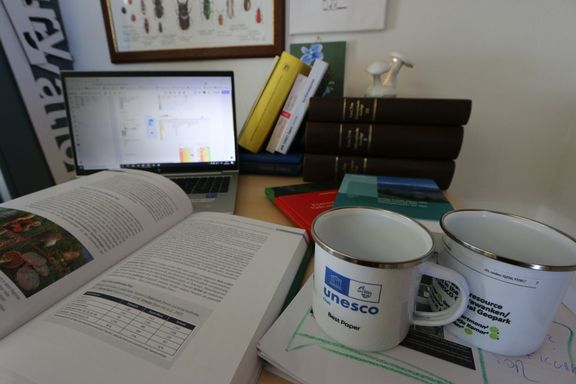
Dieser Bereich ist nur in englischer Sprache verfügbar.
What factors influence forest ecology, and the amount of carbon stored in temperate primary forests?
09.04.2025 | Ralhan Dheeraj | Postdoctoral researcher, Czech University of Life Sciences Prague
Why not going down from the stupid summits? – On some pros and cons of alpine biodiversity monitoring
02.04.2025 | Harald Pauli | International GLORIA Coordination at OEAW/IGF-Mountain Research and BOKU/Botany
Can Butterfly Monitoring Contribute to Evaluating the EU Restoration Law?
26.03.2025 | Rüdisser, Johannes Markus | University of Innsbruck
Beneath the Pavement: What are the hidden truths of land cover segmentation?
19.03.2025 | Petschnigg, Christina | Fraunhofer Austria Research GmbH
Why should the daffodil meadows in Ausseerland be protected and preserved?
12.03.2025 | Franziska Miller-Aichholz | ecologist and head of the Verein zum Schutz und Erhalt der Narzissenwiesen, Austria
Bad or good memory: how can open access tools help us understand ecological connectivity, Zaira?
05.03.2025 | Zaira Valgi | Junior Ecologist at the COREBIOM Project and intern at the Natural History Museum, Mozambique
Will autonomous robots come to the rescue of endangered ecosystems, Thomas?
26.02.2025 | Schmickl, Thomas | Professor at the Institute of Biology, University of Graz, Austria
Why should global conservation strategies prioritize youth programs like Nature Guardians, Augusto?
19.02.2025 | Augusto Júnior Nhampossa | Junior Project Manager at Associação Natura Moçambique
The end of the night is near. How can we save the naturally dark night, Clemens?
12.02.2025 | Christian Schnaitl | Speaker of “Paten der Nacht – Österreich“
How do visitors plan, navigate, and track their adventures in conservation areas, Lilia?
05.02.2025 | Lilia Schmalzl | Senior researcher at UNESCO Chair on Sustainable Management of Conservation areas
What is the role of citizen science in biodiversity research in Austria, Daniel and Florian?
29.01.2025 | Daniel Dörler; Florian Heigl | Senior scientists for citizen science at BOKU University, Austria
No kangaroos in Austria (or maybe not just yet?), but Australian IT infrastructure for Austria’s biodiversity portal?
22.01.2025 | Christian Lettner | Project staff at the Austrian Biodiversity-Hub, University for Continuing Education Krems, Austria
What are traditional sustainable forms of land use in the Donau-Auen National Park and if any, shall we maintain all of them?
15.01.2025 | Leputsch Susanne | Coordinator for the Donau-Auen National Park in Vienna, Austria
Is it still ecologically justifiable to eat ruminants? Do we have to choose between climate protection and the preservation of mountain pastures and meadows?
08.01.2025 | Susanne Aigner | Ökologiebüro Aigner, Austria
Is there a chance to bridge the gap between the educational systems at universities, funding and talented researchers, Ruth?
18.12.2024 | Ruth Swoboda | Director of the inatura Erlebnis Naturschau in Dornbirn, Austria
Higher and bigger: can bat population dynamics signal ongoing climate change?
11.12.2024 | Marta Polizzi | Junior Researcher at UNESCO Chair on Sustainable Management of Conservation Areas
Did the Austrian minister save Europe’s degraded nature?
04.12.2024 | An Cliquet | Biodiversity law professor at Ghent University, Belgium
What can narratives on human-nature interactions tell us about risks, Paola?
27.11.2024 | Fontanella Paola | Programme Associate Global Mountain Safeguard Research (GLOMOS)
Should we combine conventional and eDNA data to select priority areas for freshwater conservation, Joana?
20.11.2024 | Joana G. Nogueira | PhD student at Biopolis/CIBIO-InBIO research group APPLECOL, FRESHCODE
The 30×30 biodiversity target : mirage or reality?
13.11.2024 | Jo Mulongoy | President of the Institute for Enhanced Livelihoods
Can international experts, activists and scientific expeditions help Komarnica Canyon achieve UNESCO protection against hydropower threats, Andrijana?
06.11.2024 | Andrijana Mićanović | Researcher and project coordinator at the Montenegrin Ecologists Society
Brochures, butterflies and more – What drives businesses to apply and change for protected areas’ branding initiatives, Maren?
30.10.2024 | Maren Kleinau | PhD candidate at the Carl von Ossietzky University of Oldenburg
How can we categorize the extinction risk of species, Peter?
23.10.2024 | Zulka Klaus Peter | Senior expert at Environment Agency Austria
Protected Area Labels for agri-food products: A real solution for biodiversity, or just another fancy sticker, Athina?
16.10.2024 | Athina Koutsouki | PhD candidate at Aristotle University of Thessaloniki
How can the barcoding community respond to global conservation needs?
09.10.2024 | Adriana Radulovici | Executive Secretary of the International Barcode of Life
Can conservation research findings really become the next billion-Dollar Startup – with a little help from the Gründergarage, Petra?
02.10.2024 | Petra Hössl | Senior Researcher in the Industrial Engineering program at CUAS
How did one tree conquer a whole continent, Anna?
25.09.2024 | Anna Kovarovics | Expert on conservation areas at E.C.O. Institute of Ecology
Whinchat are you still singing in the Alpes vaudoises, Jean-Christophe?
10.07.2024 | Jean Christophe Fallet | secrétaire exécutif at Alpes vivantes
How can we optimise the overtourism in national parks?
03.07.2024 | Mateusz Rogowski | Chair of Tourism and Recreation at Adam Mickiewicz University, Poznan, Poland
When should environmental restoration start in Ukraine?
26.06.2024 | Bohdan Vykhor | executive director at WWF Ukraine
Can stink bug control work with robots and drones, Manfred?
19.06.2024 | Hartbauer, Manfred | Professor at the University of Graz
How Can Free Conservation Tools Help Turn the Tide for Endangered Species, Adam?
12.06.2024 | Adam Turner | Wildlife Ranger And Conservation Biologist
30x30 can we learn from the past or are we doomed to repeat the same mistakes, Olivier?
05.06.2024 | Olivier Hymas | Senior Researcher at University of Lausanne, Coordinator of the IUCN-WCPA OECM Europe Working group
Wolfgang, what are the facts about the European Restoration Law?
29.05.2024 | Wolfgang Suske | expert for nature protection and executive director of Suske consulting
20 Years of Carpathian Convention. What are the strong and what are the weak points, Harald?
22.05.2024 | Harald Egerer | Head of UNEP Vienna Programme Office - Secretariat of the Carpathian Convention
How can we design a transdisciplinary exploration of a national park, Monika?
15.05.2024 | Monika Auinger | Junior Researcher at the UNESCO Chair on sustainable management of conservation areas
How can we trace the unintended dispersal of neophytes in protected areas using eDNA, Vid?
08.05.2024 | Vid Švara | Senior Researcher at the UNESCO Chair on sustainable management of conservation areas
How to strengthen transnational cooperation on Alpine biodiversity issues, Claire?
24.04.2024 | Claire de Kermadec | project officer at the permanent secretariat of the Alpine Convention
What is the current legal basis for ensuring safety on visitor trails in Austria's national parks and what criteria can be used for hazard tree management adapted to the requirements of the protected area, Karoline and Ernst?
17.04.2024 | Karoline Zsak, Ernst Karner | employee in the Donau-Auen National Park, professor for Civil Law at University of Vienna
What factors influence forest ecology, and the amount of carbon stored in temperate primary forests?
Ralhan Dheeraj | Postdoctoral researcher, Czech University of Life Sciences Prague
Why not going down from the stupid summits? – On some pros and cons of alpine biodiversity monitoring
Harald Pauli | International GLORIA Coordination at OEAW/IGF-Mountain Research and BOKU/Botany
Can Butterfly Monitoring Contribute to Evaluating the EU Restoration Law?
Rüdisser, Johannes Markus | University of Innsbruck
As part of the BioMONITec project, the Management of Protected Areas research group at Carinthia University of Applied Sciences focuses on testing the latest technologies and tools in biodiversity monitoring, evaluating their applicability and comparing them with traditional methods.
The BioMONITec Configurator offers a collection of interactive online tools that are intended to assist conservationists.
Becoming proficient at identifying species requires observational skills and extensive field experience. In projects like BioMONITec, we explore how technology can assist experts to develop their capacities.
Unmanned Aerial Systems, also known as “UAS” or simply “drones” provide exciting opportunities for very flexible and fast “on-demand” monitoring of the environment.
Utilizing advanced 3D modeling techniques, we can comprehensively capture habitat features including horizontal and vertical habitat structures, terrain characteristics, biotic features, habitat complexity, and environmental disturbances.
Whether it's magnetometers for cyclists, video cameras for accurate visual counting, infrared counters for hikers, or other technology on the market, understanding and choosing the right technology for monitoring is crucial.
Environmental DNA (eDNA) can be found in the environment and extracted from a variety of media such as water, soil, or wood. Collecting eDNA from the environment and performing eDNA analysis enables determination of different organisms living in these media.
The challenge in dealing with the SDGs
Bundesministerin Leonore Gewessler - Österreichisches Bundesministerium für Klimaschutz, Umwelt, Energie, Mobilität, Innovation und Technologie
Andrej Sovinc - Slowenischer Ingenieur, Hydrologe und Ökologe (IUCN/WCPA)
Jeden Sommer können Studierende im Rahmen eines Talentpraktikums der Österreichischen Forschungsförderungsgesellschaft (FFG) praktische Erfahrungen in der Forschung sammeln. Abschlussvideo unserer Praktikant*innen aus dem Jahr 2022.
Every summer, students can gain practical experience in research at a talent internship of the Austrian Research Promotion Agency (FFG). Final video of our interns from 2023.
In summer 2024, three interns, funded by the Austrian Research Promotion Agency (FFG), were able to gain an insight into research. Final video of our interns from 2024.
Forschung & Lehre: Zu Besuch im Outdoor-Labor in Metschach
Vanessa Berger und Ilja Svetnik geben einen praktischen Einblick in ihre tägliche Arbeit mit Biodiversitätstechnologien.

The designations employed and the presentation of material throughout this publication do not imply the expression of any opinion whatsoever on the part of UNESCO concerning the legal status of any country, territory, city or area or of its authorities, or concerning the delimitation of its frontiers or boundaries. The ideas and opinions expressed in this publication are those of the authors; they are not necessarily those of UNESCO and do not commit the Organization.